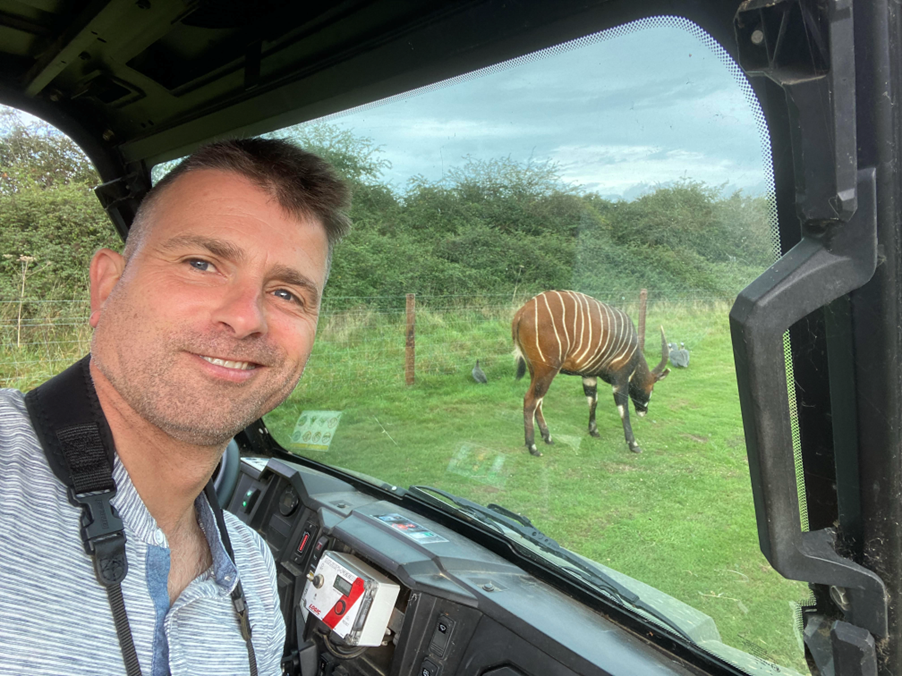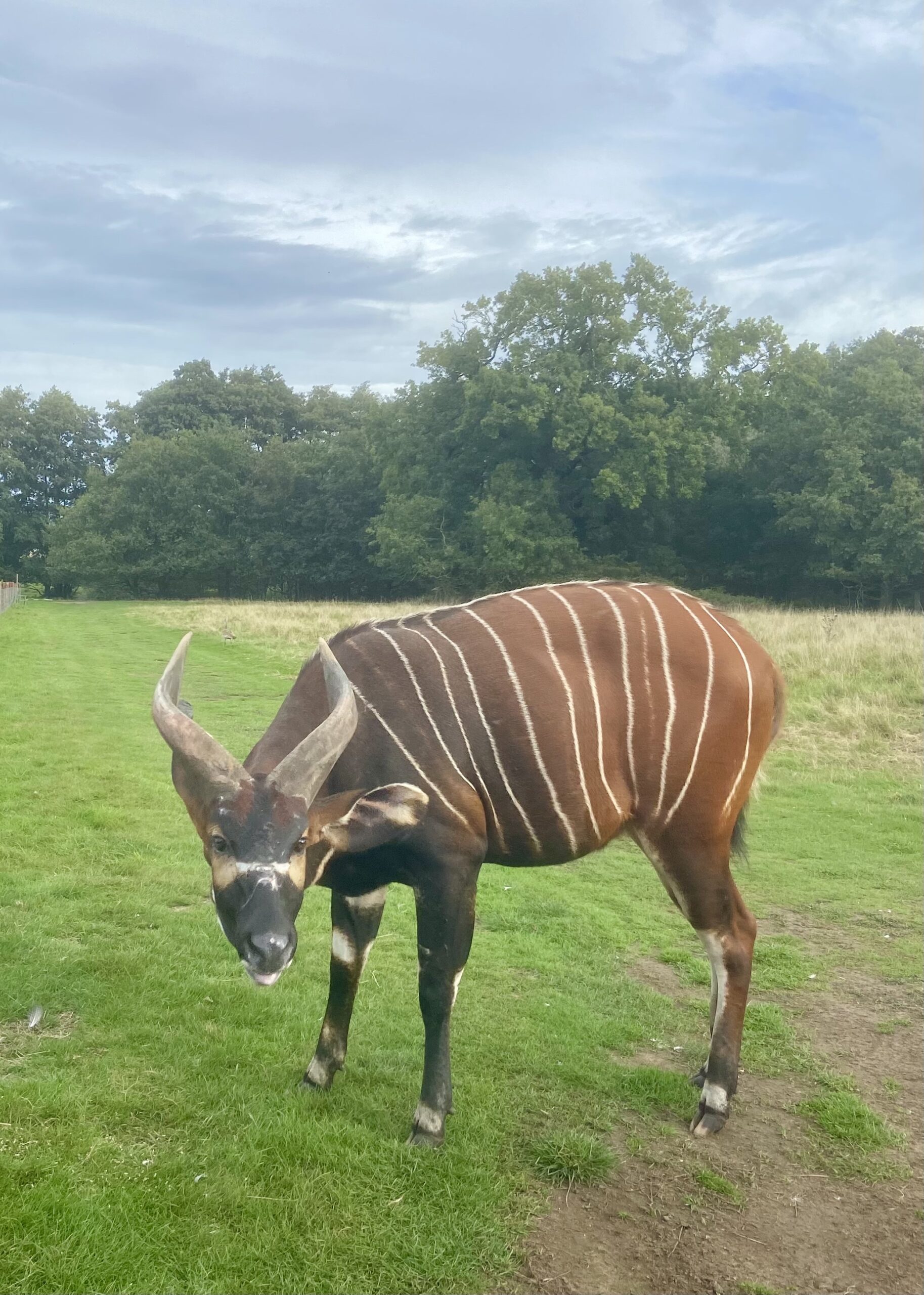Watatunga welcomes conservationist, Nick Acheson

As a conservationist, I spend my life thinking about species and the wild places they inhabit.
Though I tend to work with wildlife in the wild, I was honoured and intrigued when Anna and Ed of Watatunga invited me to visit the reserve, to see what they’re up to and hear about their future ambitions.
There’s a Jurassic Park feel to your entry to Watatunga, as your buggy train trundles through birch and sycamore woodland to an impressive fence, with automatic gates and a state-of-the-art cattle grid. Thereafter, whichever route your safari takes, you are in one enormous, varied enclosure, visiting the lives of ungulates from around the world.
The first mammal which slipped across the road in front of us was a hog deer stag, followed quickly by a female white-lipped deer. This handsome animal is native to the eastern Tibetan Plateau, in Tibet and China, where its population is listed by the International Union for the Conservation of Nature as Vulnerable. Precious few white-lipped deer are kept in captivity in Europe, but two females have just arrived at Watatunga – making it only the second breeding facility in the UK – in the hope that they will like the resident male and give birth to Norfolk’s first fawns next spring.
Soon afterwards we met the most important animal – in conservation terms – which lives at Watatunga. Named Mtoto by the zoo where he was bred, he is a young male eastern (or mountain) bongo. Whereas white-lipped deer are scarce and their population is probably declining, the stunningly beautiful eastern bongo is in desperate need of human help. Fewer than 100 of these magnificent animals – perhaps as few as 50 – survive in the wild, in mountain forest in Kenya. The eastern bongo is listed by IUCN as Critically Endangered. Watatunga has been identified as a potential future breeding site, where it is hoped that Mtoto will pass his genes to generations of eastern bongos yet unborn.

It might seem fanciful to imagine that animals raised in Norfolk woodland and grassland might meaningfully contribute to a species’ survival in the wild, but another antelope we met shortly afterwards is living evidence that British zoos can play a role in real-world conservation. Since Watatunga offers outstanding opportunities for animals to live semi-naturally, finding food across 170 acres of grassland, woodland, wetland and scrub, spare animals from carefully planned breeding programmes are sent here, to relax and stay healthy for as long as their genes are not needed elsewhere. Watatunga’s handsome male scimitar-horned oryx is just such an animal.
In the year 2000, the scimitar-horned oryx – which is native to the fringes of the Sahara – was declared Extinct in the Wild by IUCN. In recent years, zoo-bred animals from British, Irish, European and North American zoos have been sent to Chad for reintroduction to the wild. Thanks to this work by zoos, the scimitar-horned oryx may soon have self-sustaining wild populations again.
Conservation is a relentless business, and everywhere on Earth the tide is against us, but it is wonderful to imagine that eastern bongo raised at Watatunga might one day join efforts to re-establish this gorgeous animal in parts of Kenya and Uganda where it has been lost. The task ahead of Mtoto is mighty, but he is a fine young antelope, and we wish him luck.
Nick Acheson is a Norfolk conservationist who speaks, teaches and writes on nature and the environment. Author of The Meaning of Geese, on the fortunes of the wild geese which visit Norfolk in winter, he is a regular contributor to books, magazines, newspapers and the media.